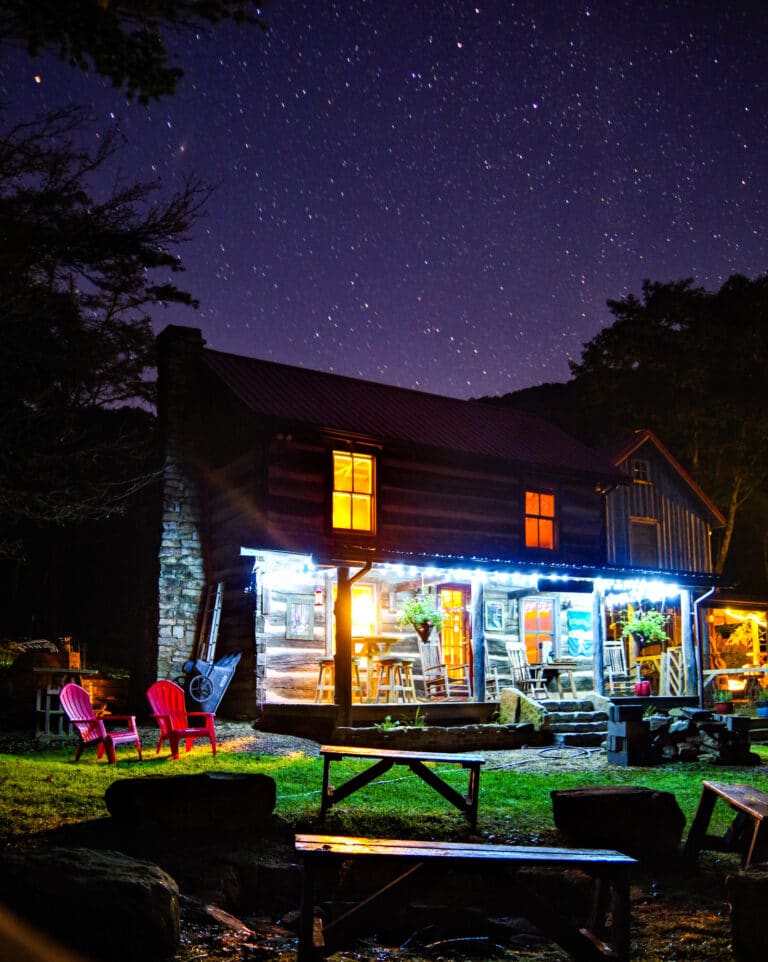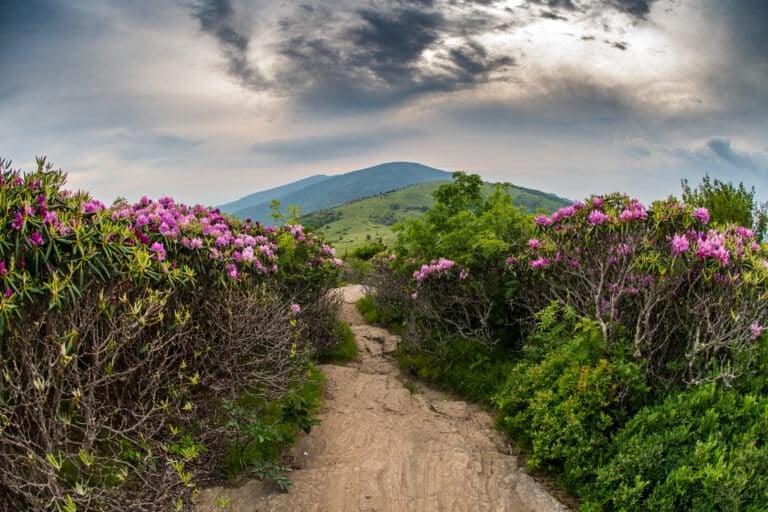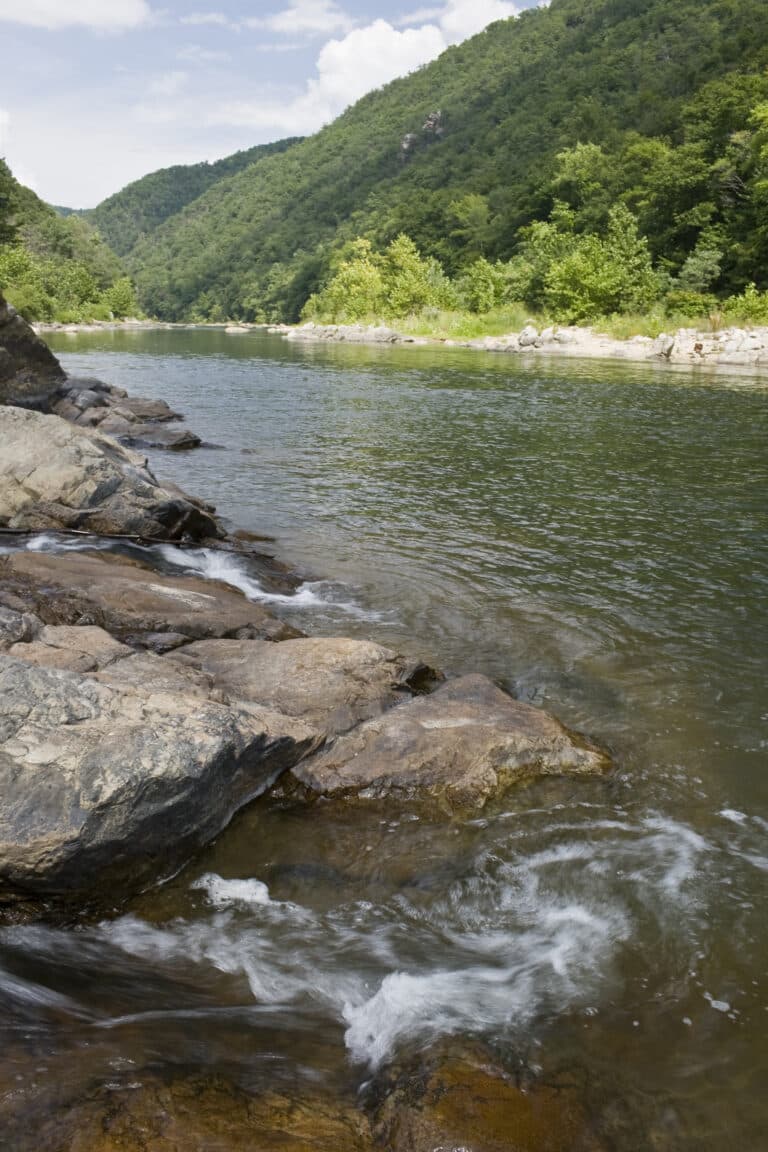Man appeared on earth in a hospitable era. After eons of violence, we inhabited a rugged beauty through which we now recreate and explore. We are so fond of this–the only forested planet in the universe–we attempt to subdue nature’s temper in order to avoid change, spoiling what we love most in the process.
Like the failed levees along the Mississippi, our engineered taming of the beast often backfires into catastrophe. What should have been free to enrich the mud-adapted lowlands became an imprisoned monster that broke out when Hurricane Katrina hit. And just as rivers swell, forests burn.
Wildfire policies in the United States have sparked intense debate for centuries. In the forest, the recreationist sees freedom, the real estate agent sees privacy, the scientist sees an ecosystem, and the lumberman sees board feet. Let it burn, put it out: Even before the early 1900s, when the Weeks Act protected places such as Pisgah National Forest and the Wildlands Act banned human trammeling, man has disagreed about wildfire. Tourism bureaus, railroad managers, timber companies, treasury secretaries, and people who simply hate to see trees ablaze have all had their say. Policy adjustments followed big fires, while the tools for suppression steadily advanced.
Even though the ecological benefits of fire have long been understood, putting concessions into a policy that manages nature’s style of give-and-take is like planning a backcountry trail from the desk of a New York City high-rise. Results just cannot meet intentions. Remember, also, that many of our public forests exist because the U.S. Forest Service was created within the Department of Agriculture (USDA). Under the leadership of Gifford Pinchot, forestry was, at its core, about harvesting trees and maximizing profit. Pinchot himself understood the service of fire, but he professed objection to the “law of the jungle” and believed “forest fires were wholly within the control of man.” The agency’s concerns have since expanded, but its mission remains “to sustain the health, diversity, and productivity of the Nation’s forests and grasslands…”
Throughout the United States today, every entity (National Park Service, Bureau of Land Management, Fish and Wildlife Service, Department of Interior, and more) with a role in forest fire prevention has its own rules. And with a legacy of logging and fire suppression behind us, a proverbial tinderbox is before us.
Fire Science
The living things in a forest share finite resources by using them, altering them, and passing them on. Carbon, oxygen, water, nitrogen, minerals, and the sun’s energy are always either cycling or held in reserve. Like rain, fire propels the process.
For both man and nature, smaller fires are best. A raging crown fire cannot be contained. It is erratic, rumbling, terrifying, and dangerous. Tornado-like convection winds send smoke thousands of feet into the air. A too-hot fire sterilizes the soil. It explodes trees. The leftover material erodes into the nearest waterway, leaving a desolate landscape that cannot recover.
A surface fire, meanwhile, forces dead and diseased trees to release their reserves. The ash creates an exceptionally rich seedbed. Fire-adapted species are charred and pinecones drop their desirable cache. The forest floor is opened. Ground dwellers hide safely in their burrows, while others have time to flee. Damaging diseases and insects as well as the tangle of aggressive, choking plants are erased. And since small fires can be more easily contained, human habitat is more easily protected.
In general, Nature would most often orchestrate surface fires. But since suppression builds fuel ladders to the canopy, it sets the stage for crown fires.
Wild Versus Natural
The often-quoted Wilderness Act of 1964 declared lands such as the Linville Gorge in North Carolina to be free of human engineering. Here the debate centers on the subtle-but-giant difference between wildness and naturalness. According to researchers, professors, and ecologists such as Peter Landres of the Aldo Leopold Wilderness Research Institute, land that is wild may not necessarily be natural because of human impact. Where the act mandates wildness, human manipulation must be prevented. Where natural conditions are cited, the lighting of torches to return fire to the forest comes into play.
Prescribed burning is done to overcome a multitude of human-caused problems when they’ve degraded the ecosystem enough to warrant action. It also resets conditions to pave the way for any future fire to be left alone, because it diminishes the likelihood of an inferno.
The Nature Conservancy (TNC) is a land steward that employs fire right alongside the Forest Service. Deborah Landau, who has been with TNC for 14 years, leads the ecological restoration programs for the Maryland/D.C. chapter and is an expert in fire ecology. She said, “We will use fire as a tool to meet our ecological needs…Nature answers immediately thereafter. We see astoundingly fast results from orchids, some of which reappear after decades of no activity. There are many rare plants, birds, and animals that come back in force.” But, she said, “We will use fire only when it is safe for adjacent properties and for all parties involved. In a controlled burn, our primary driver is safety.”
Recent Fires
National headlines usually come out of the hot and dry west, but as Landau noted, “Wildfire danger and altered ecology is an issue on both sides of the continent.”
This past spring, a North Carolina resident was legally burning debris, which ignited a difficult-to-fight wildfire in the tender wildland-urban interface at the southern end of Pisgah National Forest. Though the Ridgecrest fire was expected to consume 2,000 acres, a consorted effort kept it to 740 acres burned.
In April, the nearby Blue Gravel wildfire burned 521 acres in the Linville Gorge Wilderness area, closing roads and trails. The cause may never be determined. Part of Pisgah’s Grandfather Ranger District, the remote area was already recognized as in need of a natural fire regime via a winning proposal submitted to the USDA’s Collaborative Forest Landscape Restoration program. Blue Gravel was left to burn until it reached previously established fire lines.
Too many interests banging on the door make it difficult to calm a caged monster. Before any fire is allowed to burn, the risk to human safety must be analyzed and minimized. “Hazardous fuels” are removed under a 2014 Farm Bill program that salvages dead and diseased trees, essentially plucking them from the forest as “renewable energy” to power man’s habitat. Every policy in response to wildfires bends to the protection of human lives, property, and economics. But at what consequence? That which nature bestows remains a direct result of her unchained fury. There is no picking one or the other.
The Need for Caution
Even proponents of natural fire agree with Smokey Bear: be always on guard. Out West, the most expensive fire in Colorado history was ignited by an ember from a fire at a volunteer firefighter’s Fourmile Canyon home, one he had extinguished four days prior. 6,200 acres and more than 100 homes burned. Charred trees dot the 10,000-foot mountainsides like the five o’clock shadow on a dark-haired man. An accident determination left the firefighter open to civil lawsuits. He knew about fire regime. He thought his fire was out. He burned down 169 structures.
—
Ruth Heil blogs about being outside at www.TodaysWalkOutside.com. Email her at [email protected].








